Like Google, LinkedIn itself can act as a valuable search engine.
In this article, you’ll learn how to leverage LinkedIn SEO to increase your visibility and reach more of the right people.
What Is LinkedIn SEO and Why Is It Important?
Search engine optimization (SEO) on LinkedIn means improving your profile (or your company’s page) to rank higher in LinkedIn’s search results.
And higher rankings make it more likely for recruiters or potential clients to find you.
SEO for LinkedIn follows a similar blueprint to optimizing a website for Google—do keyword research, conduct a target audience analysis, and implement on-page optimizations (more on that later).
Here’s how an SEO approach can benefit your LinkedIn efforts:
Generates Warm Leads
An optimized profile means you can appear in LinkedIn search results as a credible source when people search for your company, services, or other industry keywords.
Depending on what information they’re looking for, these people could be warm leads. They’ve expressed interest in solutions you can provide.
LinkedIn enables you to find and engage with these people and move them through your sales funnel. That’s key.
Why?
Because four out of five buyers on LinkedIn have twice the buying power of the average web audience and are six times more likely to convert.
LinkedIn is also the world’s largest professional network. So, it has the potential to connect you and your business to your target audience.
Helps You Find Jobs and Hire the Right People
An optimized profile makes it easy for recruiters to find the right candidates with LinkedIn’s robust search features.
And job seekers can use profile optimization best practices to ensure the right recruiters discover their profiles.
Like this:
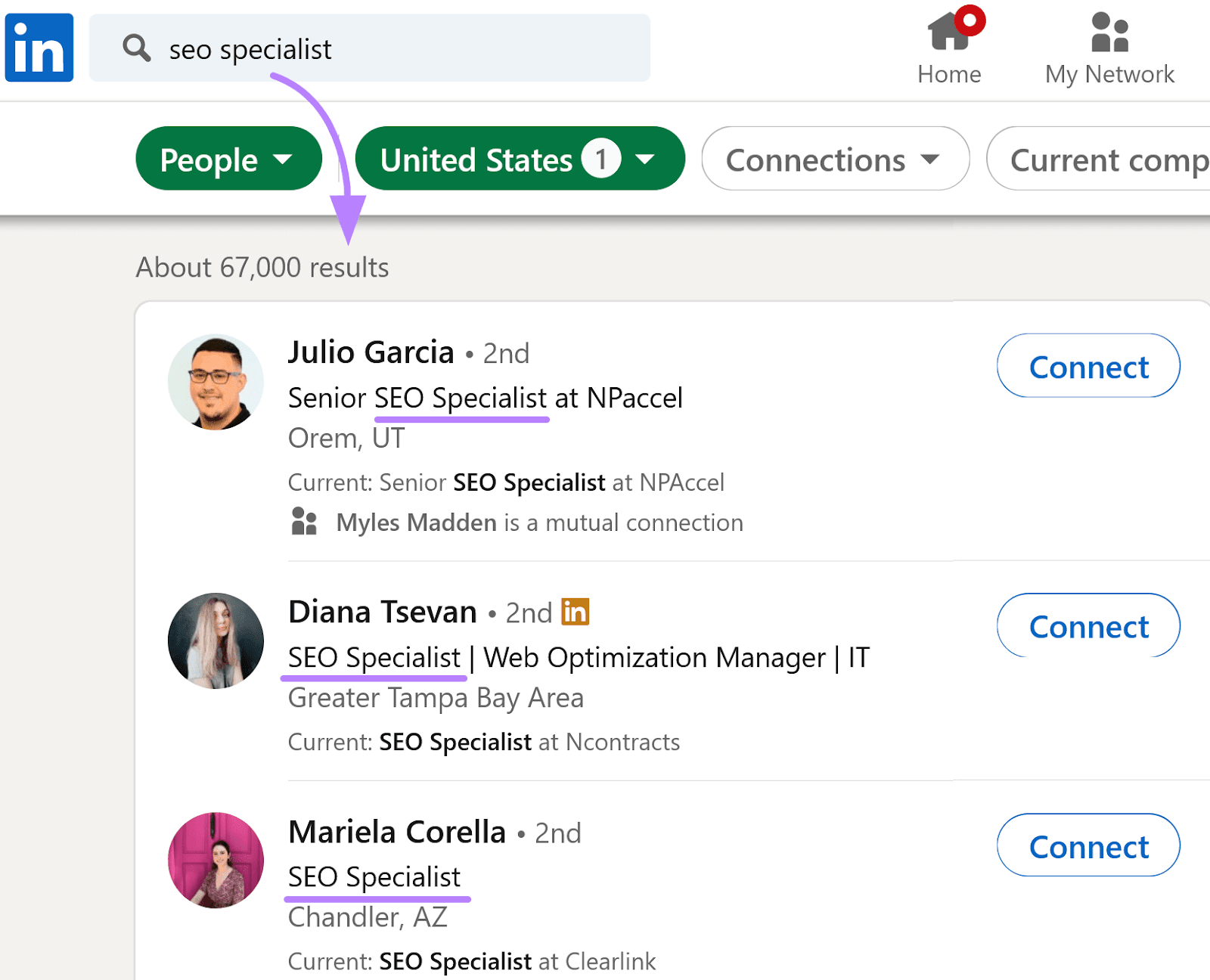
And optimizing your profile is even more important than it was a few years ago. Because remote job postings on LinkedIn have increased by more than five times globally since the start of the pandemic.
Simplifies Building Repertoire with Peers
Optimizing your LinkedIn profile facilitates professional connections. And you can then message industry peers, potential employers, or job seekers directly on LinkedIn.
These connections could eventually refer you for a job, direct you to the right people, or collaborate with you on projects.
Here’s an example of how you can go right from finding someone to starting a conversation:
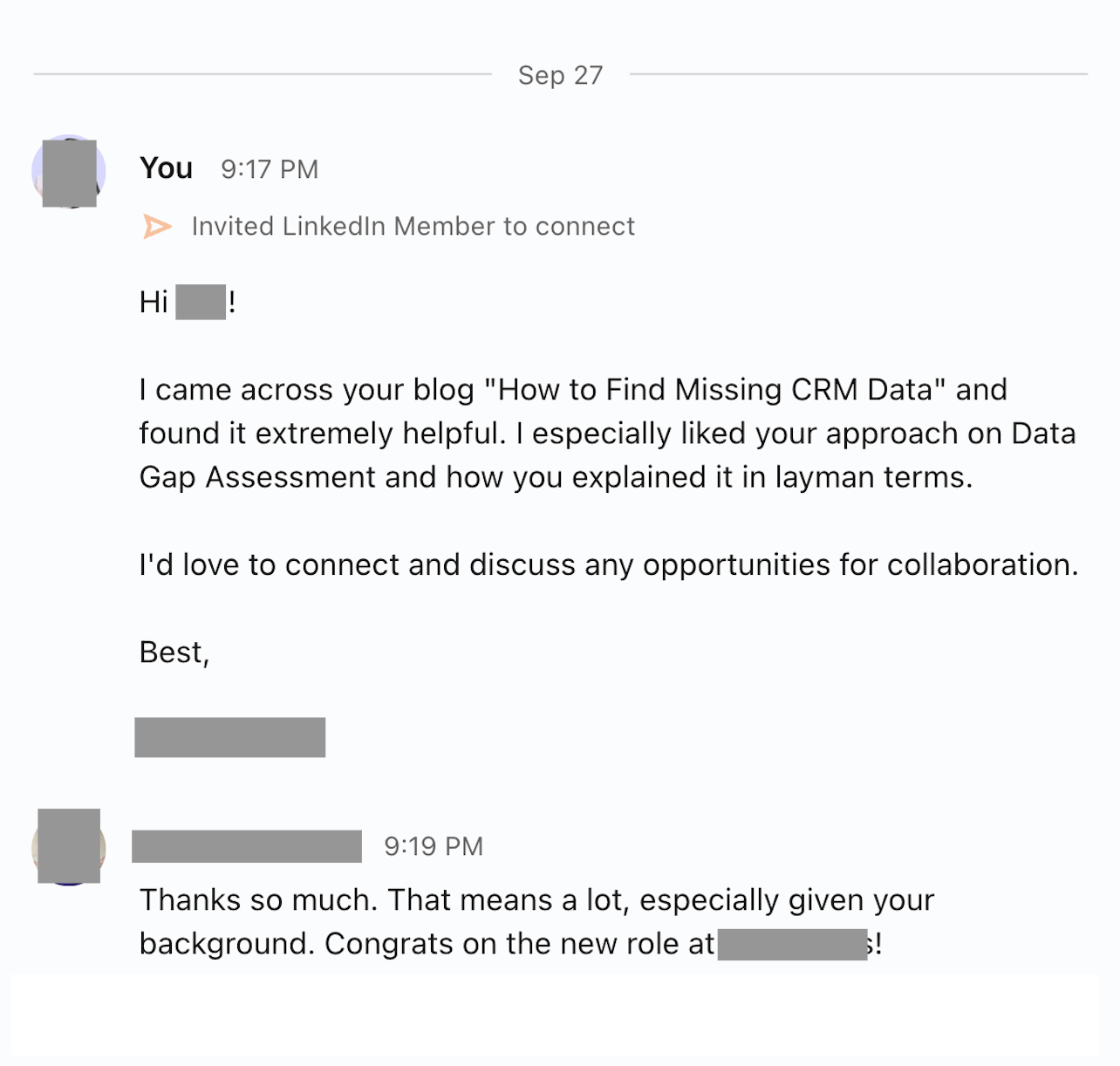
How LinkedIn Ranks Search Results
LinkedIn's search algorithm prioritizes personalized and relevant results to provide users with useful information.
The order results appear in depends on what the user is searching for—people, company pages, jobs, posts, etc.
For example, a LinkedIn overview on the member experience says that the algorithm for company page searches considers the page’s name, number of followers, content quality, and more.
Want to know more about how well optimized your personal profile is for LinkedIn search? The Social Selling Index (SSI) is a good indicator.
LinkedIn’s SSI tool quantifies the value of your social selling efforts (your ability to connect and engage with prospective customers via social networks) based on four profile ranking factors:
- Establishing your professional brand. Publishing helpful content and completing your profile with a target audience in mind
- Finding the right people. Identifying better prospects and building connections using LinkedIn search
- Building relationships. Connecting and interacting with decision makers in your niche and related ones
- Engaging with insights. Finding relevant insights and posting about them
Here’s an example of an SSI report:
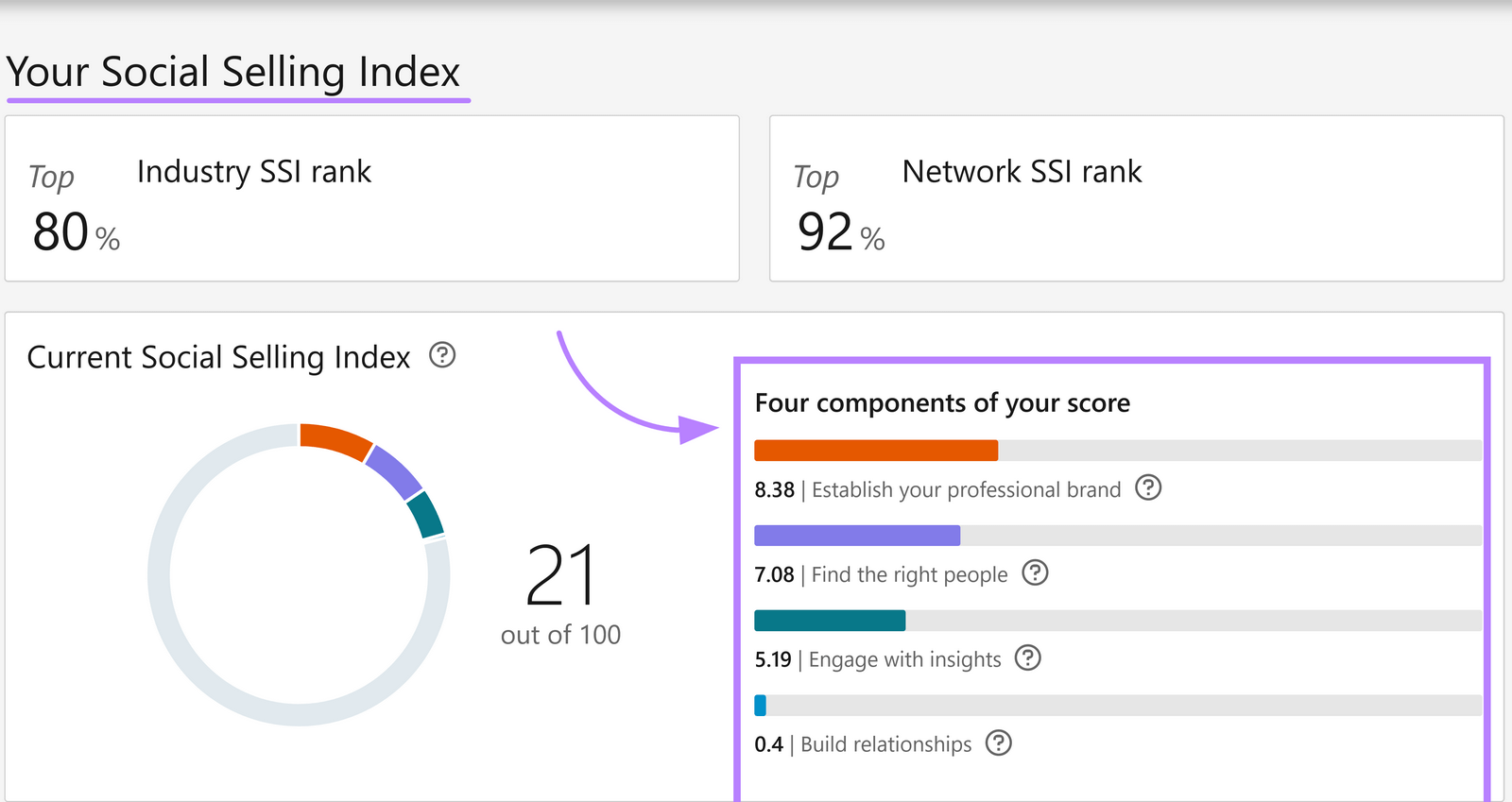
Research suggests that an SSI score of 70 or above increases your reach by 25%. So, that’s a good benchmark to consider as you measure your performance over time.
How to Conduct Keyword Research for LinkedIn SEO
Keyword research for LinkedIn involves determining words and phrases your target audiences (like recruiters and prospects) type into the search bar when looking for content or profiles related to your industry.
For example, recruiters looking for demand generation managers are likely to search for “demand generation.”
They would see something like this if they click to filter by “People”:
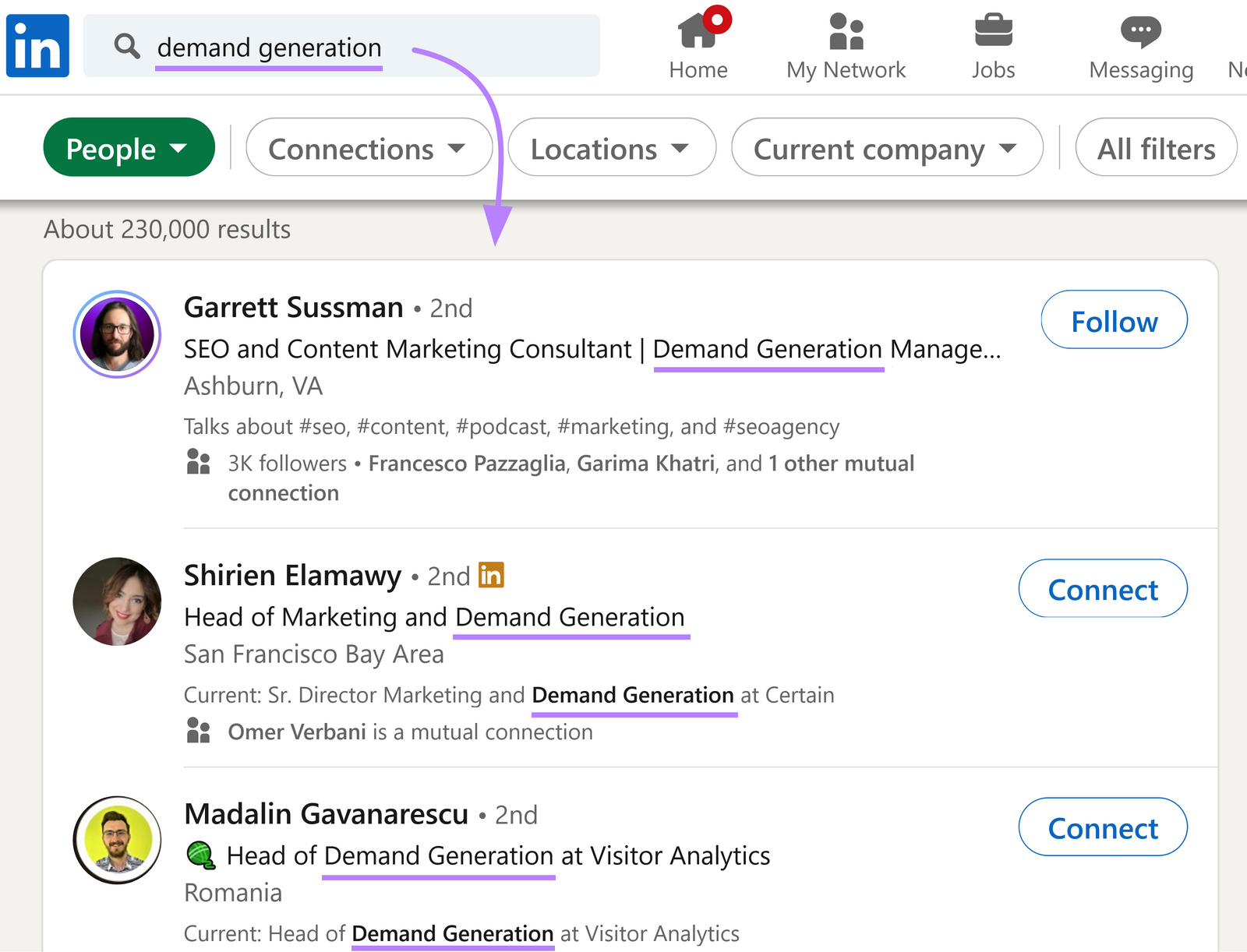
To uncover keyword opportunities, run this search yourself.
When you start your search on LinkedIn, you can filter by “1st,” connections to evaluate profiles of those within your direct network.
You can also filter by “2nd,” and “3rd+” connections, which the image below shows:
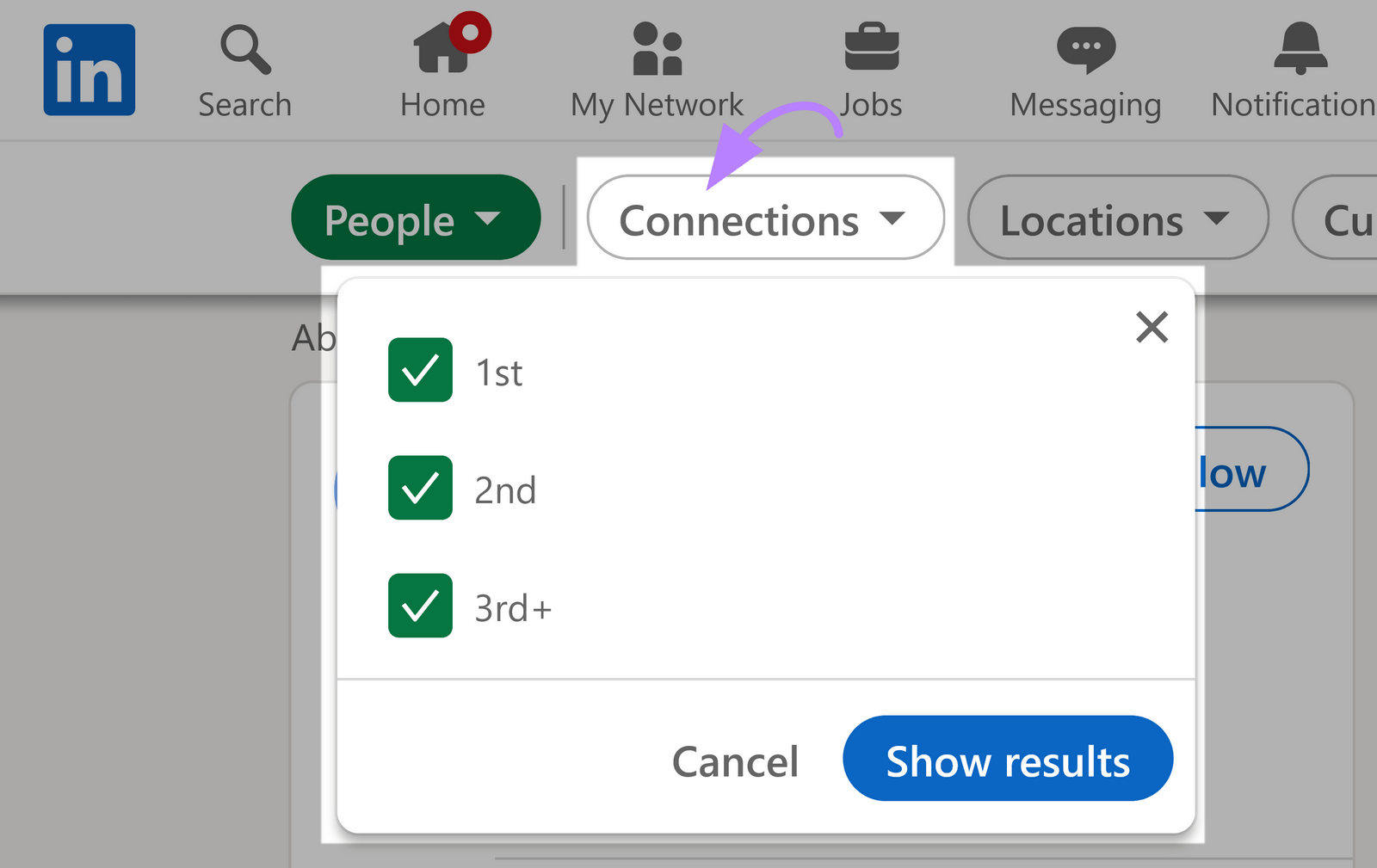
You can use these LinkedIn search results to see the keywords and phrases other professionals in your field use. Including variations they use.
You can also discover keyword opportunities using our Keyword Magic Tool.
Enter a “seed” keyword—a broad keyword phrase that helps you uncover other keyword ideas—and click “Search.”

You’ll see a list of terms that broadly match your seed term.
Click the “Related” tab to see more results that you might not immediately think to include.
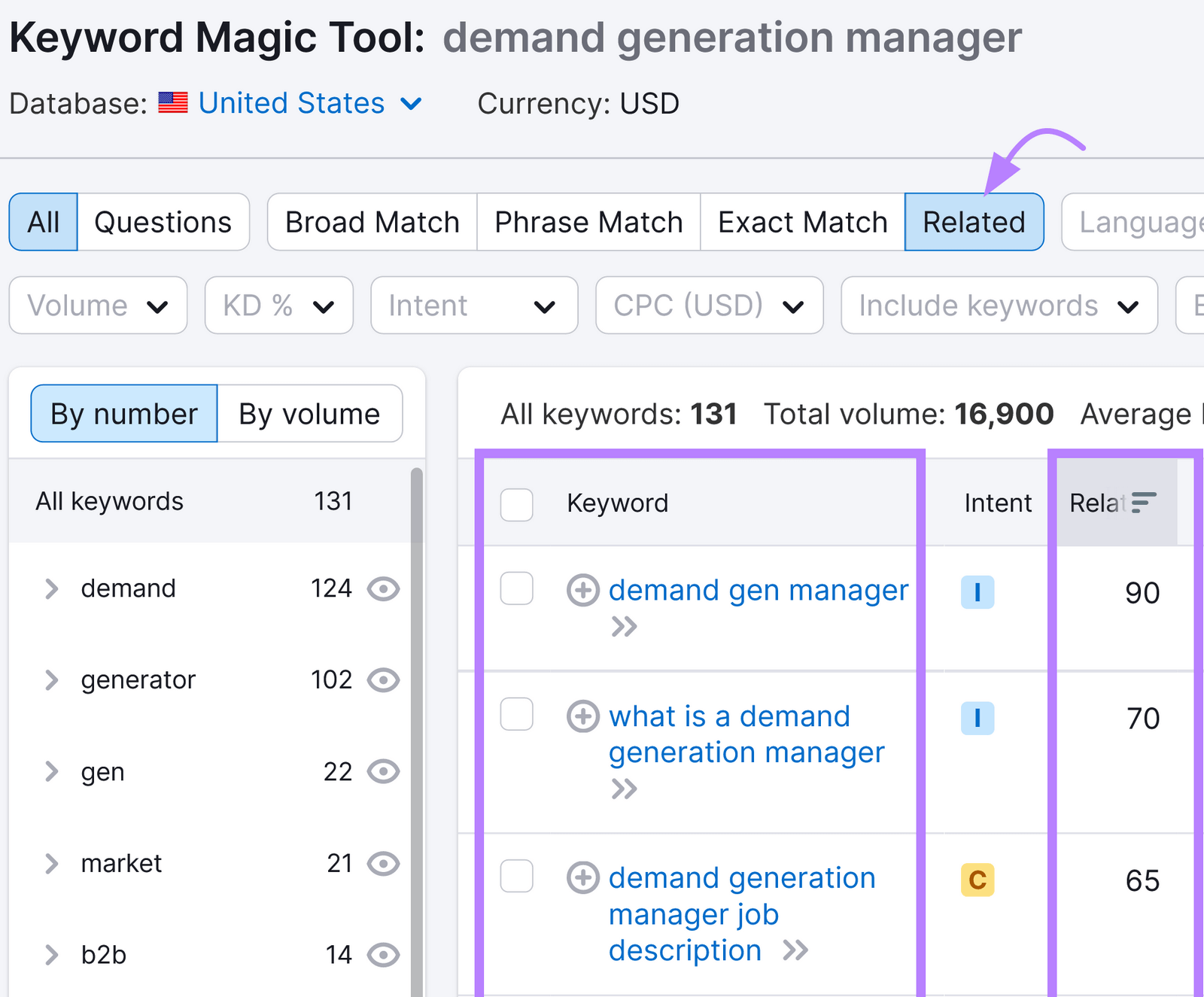
Try adding these keywords to your profile sections to see how they impact your results. Then, monitor profile views and adjust your keywords as needed.
Note: Keyword-rich profiles help with ranking, but avoid keyword stuffing. And only use terms that accurately reflect your experience.
How to Optimize Your LinkedIn Profile for Better SEO
LinkedIn follows a multi-step process to ensure its search engine returns the most relevant results, so optimizing your profile is key.
Here are six LinkedIn SEO tips to optimize your profile:
Add High-Quality Images
Include a high-quality, professional profile photo to make a good impression and show your personality. Remember that all LinkedIn search results include a profile photo.
And add an eye-catching cover photo to create a warm, inviting impression that conveys your value proposition(s).
In the example below, consistent branding in both photos gives visitors a clear idea of who you are and what you offer:
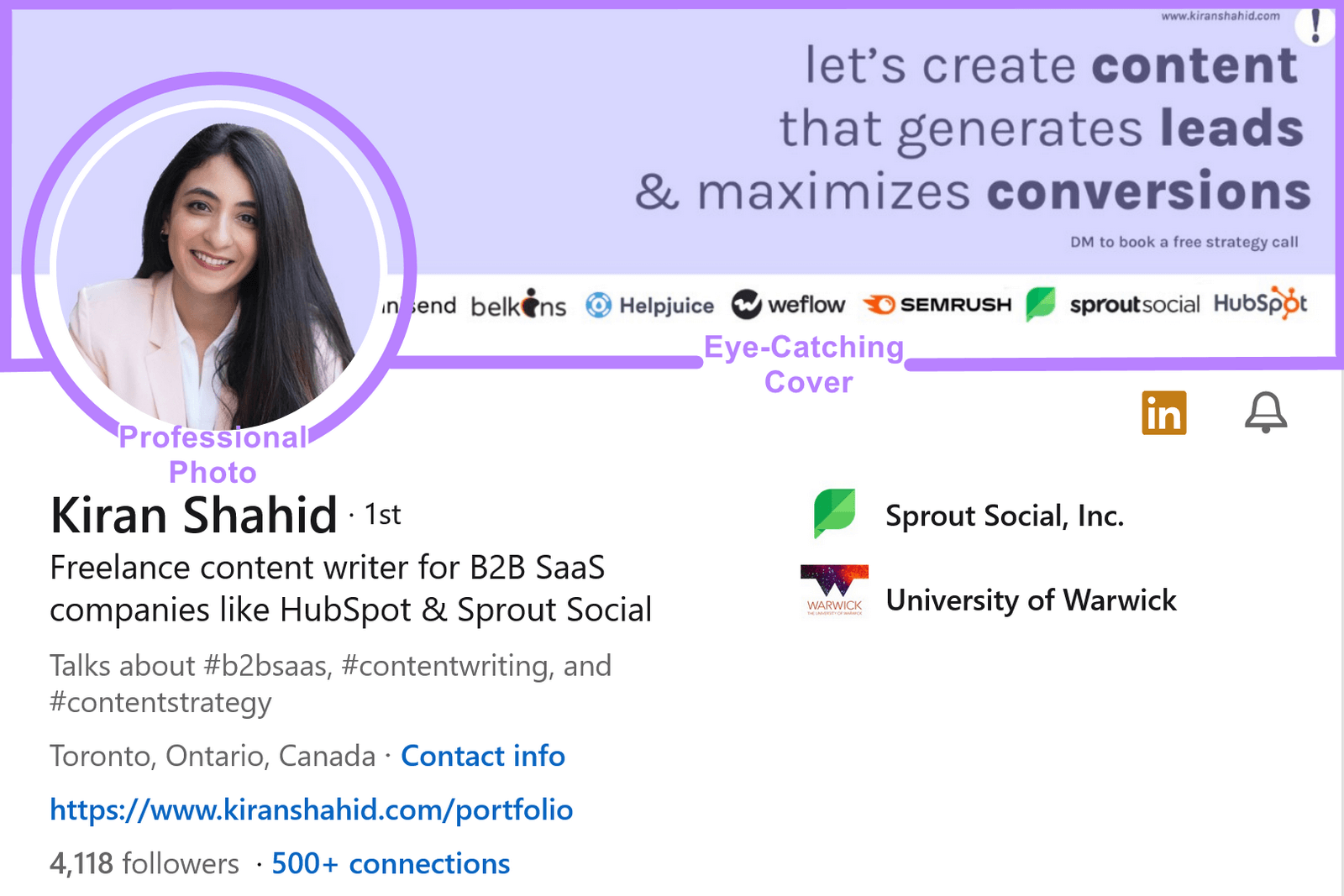
Create an Impact with Your Headline
Writing a compelling headline encourages visitors to learn more about you.
Include action words and phrases specific to your role and industry.
Jess Cook’s headline, for example, includes a position as “Head of Content,” a recognized job title. It also includes a secondary role and a specialty:
“Delivering daily cheat codes for small content teams.”
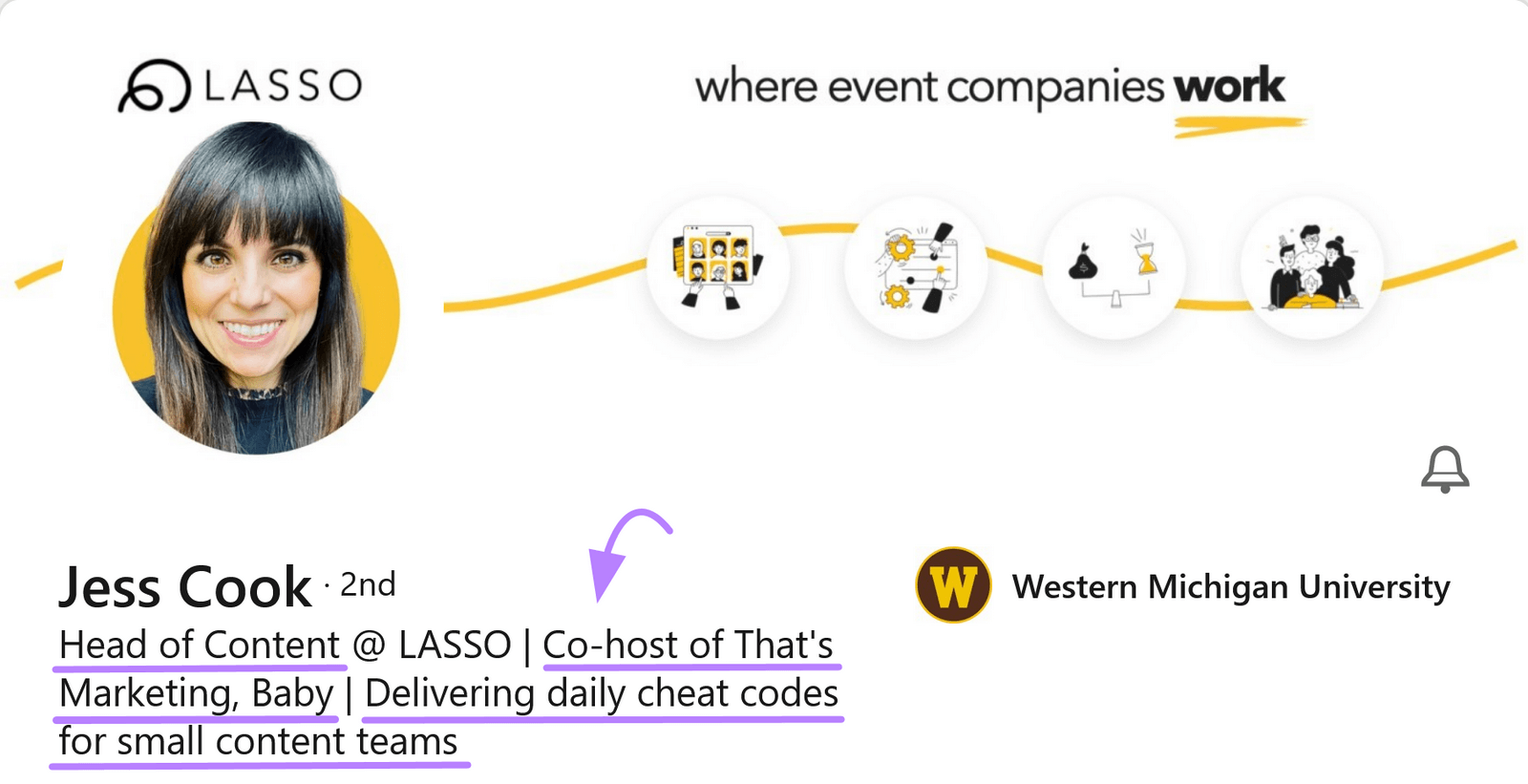
You can also add a personal quirk like Amanda Natividad did. The headline reads, “Can keep hydrangeas alive in a vase for 10 days” and “VP Marketing at SparkToro.”
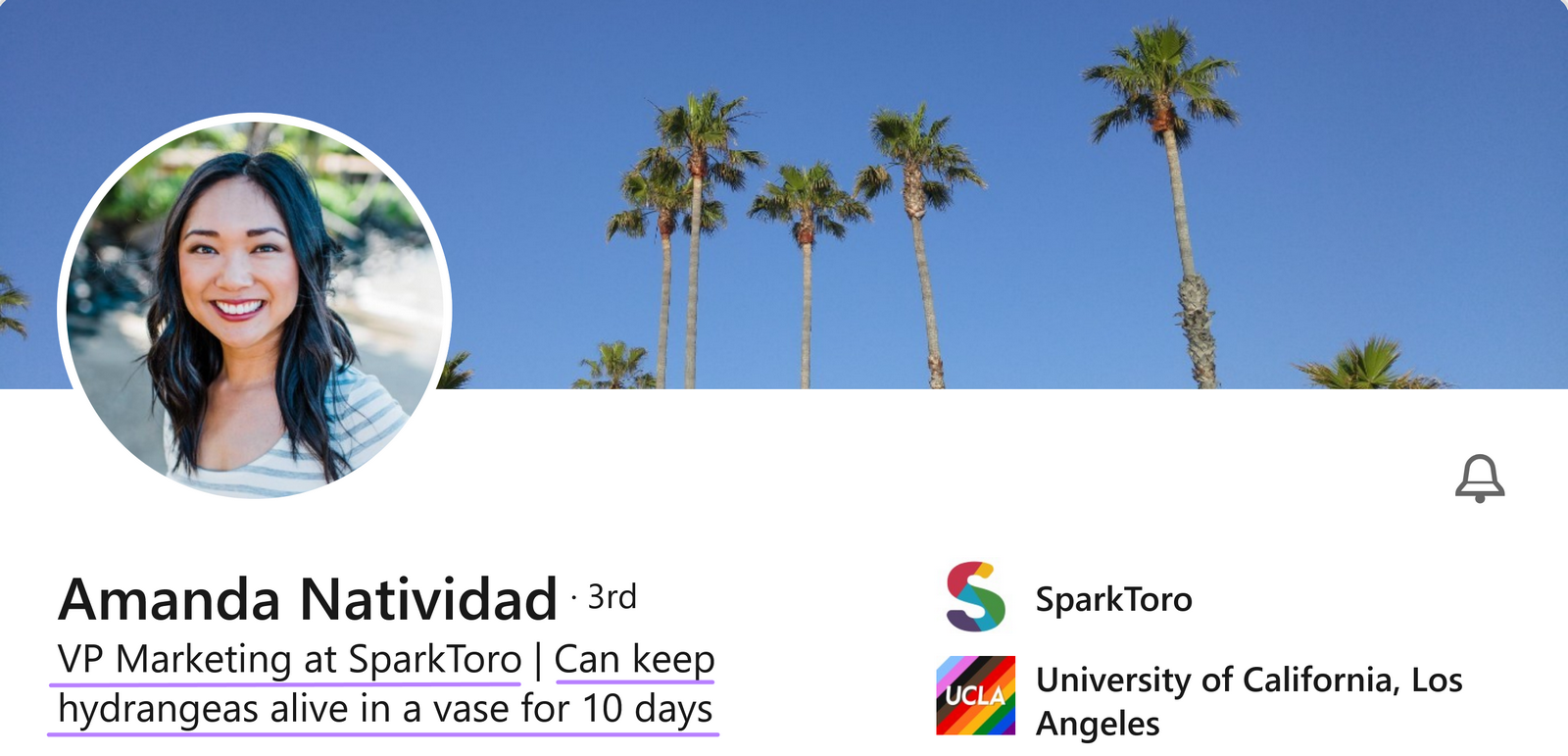
This is a good example of conveying personality and including keywords, without stuffing keywords into the headline.
Create a Catchy ‘About’ Section
Your “About” section is the best place to use keywords related to your profession and skill set.
But don’t just list what you do—use a narrative format to pull readers in.
For example, Haus of Bold Founder Erin Balsa starts by listing her target audience’s main goals to create a connection with them.
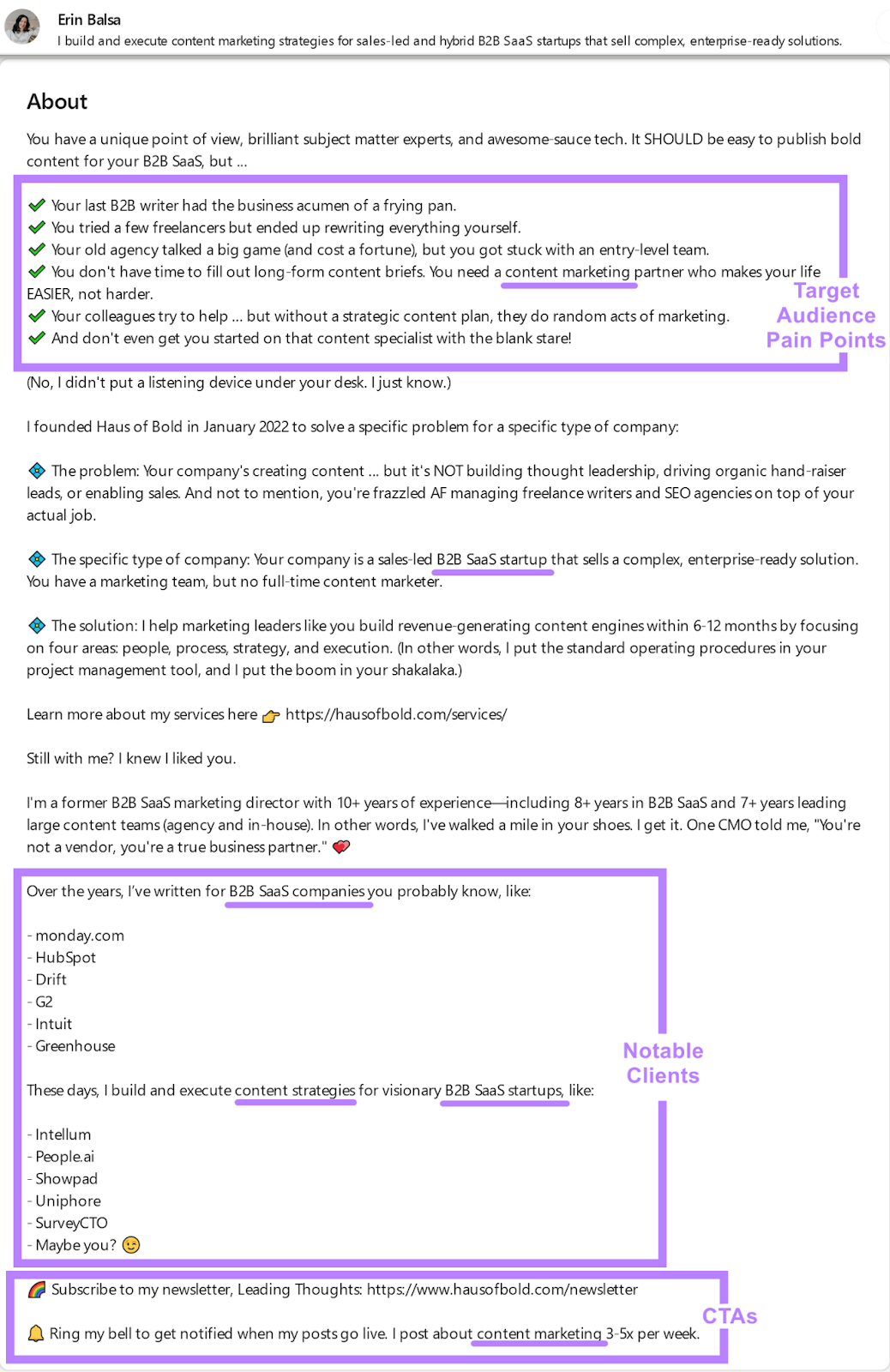
Erin also summarizes her journey and lists notable clients she’s worked with.
Erin also included keywords related to B2B SaaS and content marketing. Like “content strategy,” “content writing,” and “B2B SaaS companies.”
These elements help Erin gain visibility and traction on LinkedIn.
Optimize for Keywords in Your ‘Experience’ Section
Creating the “Experience” section of your profile to show off your achievements and feature relevant keywords can help increase your visibility.
Describe what you do, highlight how you supported colleagues, and quantify your accomplishments.
For example, Olga Andrienko, VP of Brand Marketing at Semrush, uses this section to describe responsibilities and concrete results:
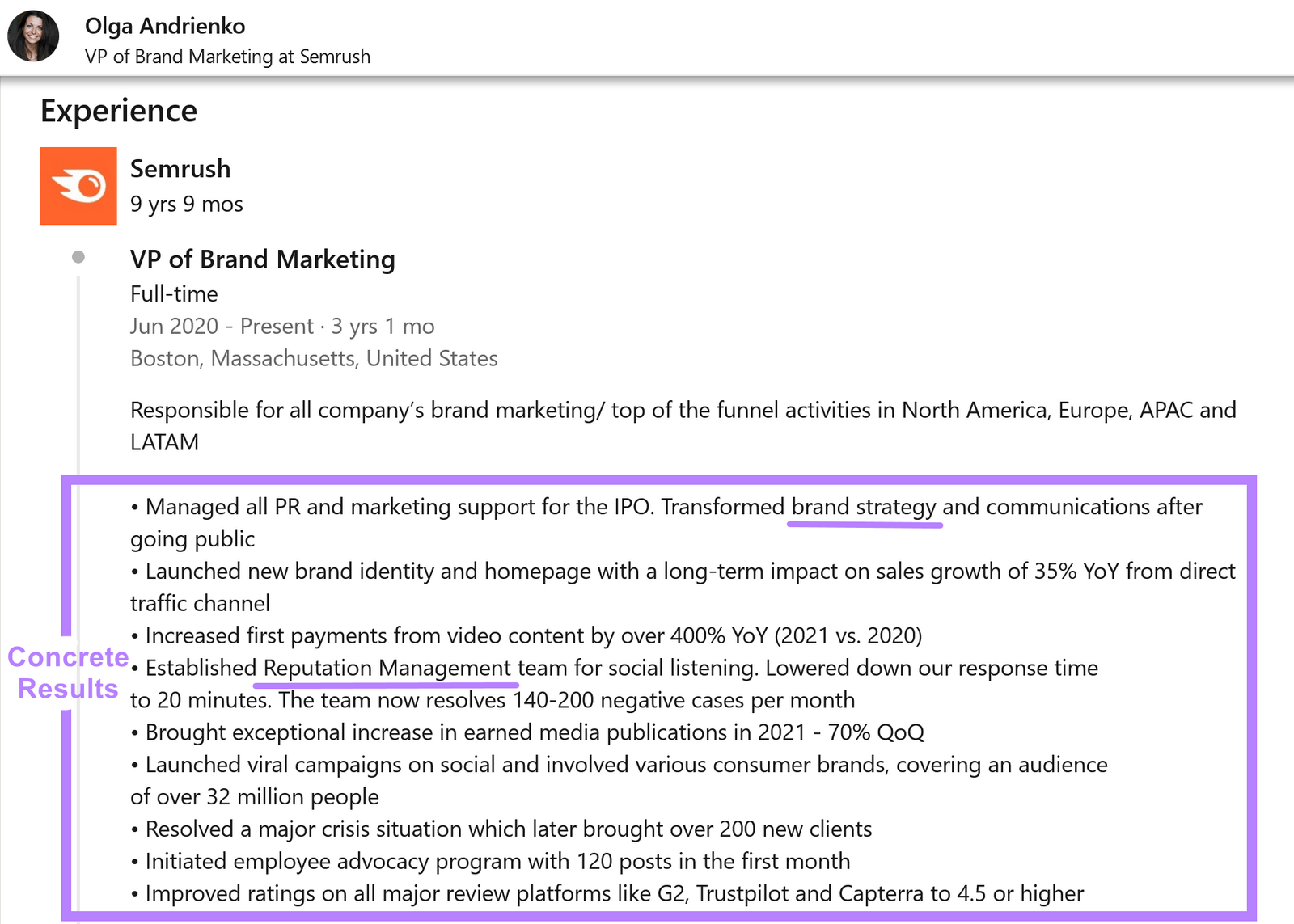
Keywords such as “brand strategy” and “reputation management” make it easier for people to find this profile in search results.
Complete Your Profile
Go beyond completing basic sections like work experience, education, and skills to get the most out of SEO for LinkedIn.
Your profile level meter includes recommendations for how to improve. It looks like this:

Once you’ve completed your profile, keep it updated to ensure you capitalize on search rankings.
Take It a Step Further: Create a LinkedIn Engagement Strategy
LinkedIn is a social networking platform, so you must be active to stand out. Here's how to get started:
Plan Content Related to Your Keyword Research
Share thoughtful and relevant updates, articles, and insights to provide value to your professional network and encourage conversation.
This content can be anything from industry news to personal stories—as long as it aligns with your brand/story.
Joel Klettke, for example, shared a unique perspective on ChatGPT that positioned him as a thought leader.
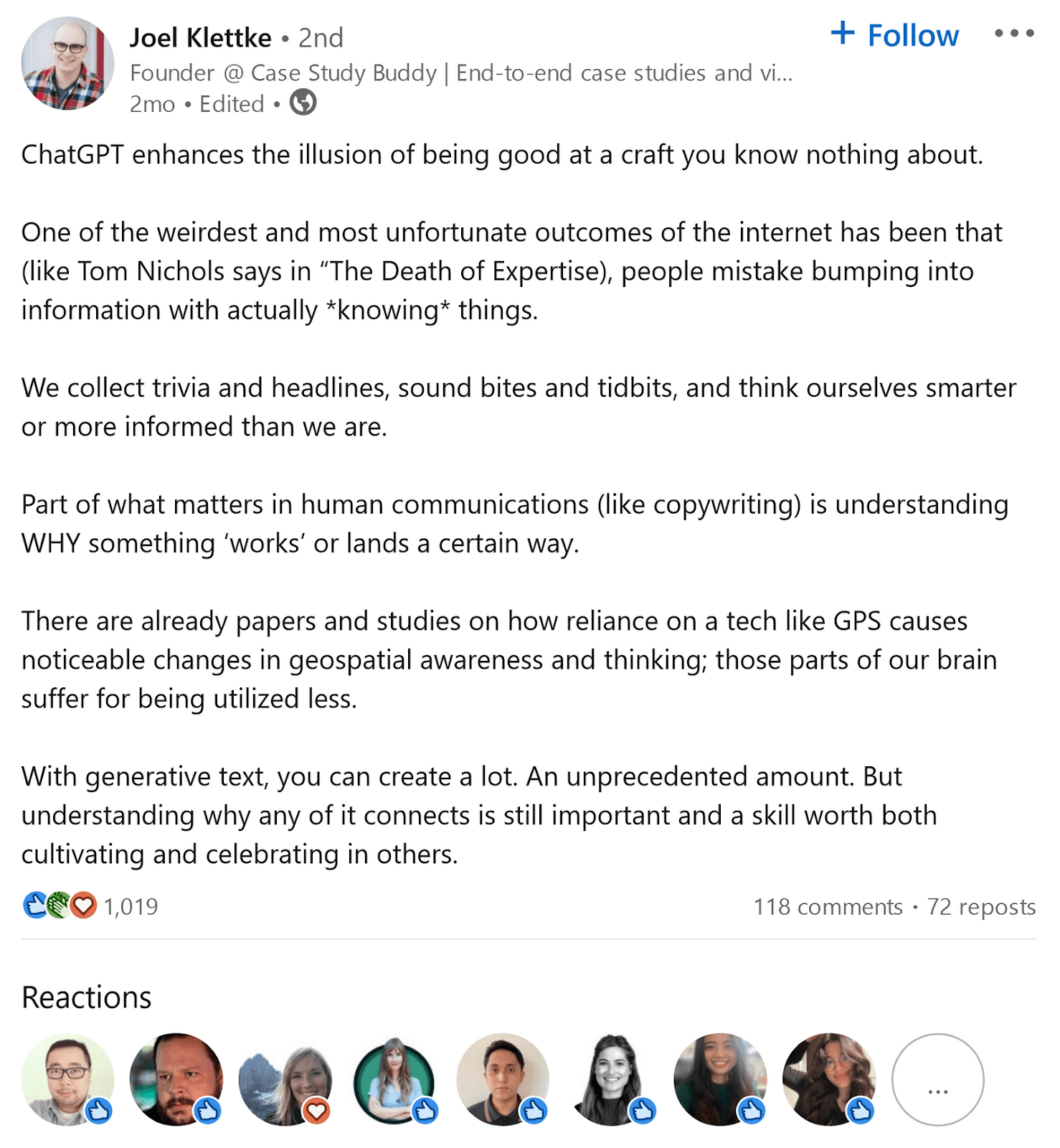
Ask others to weigh in as well so you can maximize your reach, engagement, and networking opportunities
You can also leverage idea-generation tools like Topic Research to find trending topics and conversations in your niche.
Just enter a preliminary topic, choose your country, and click “Get content ideas.”
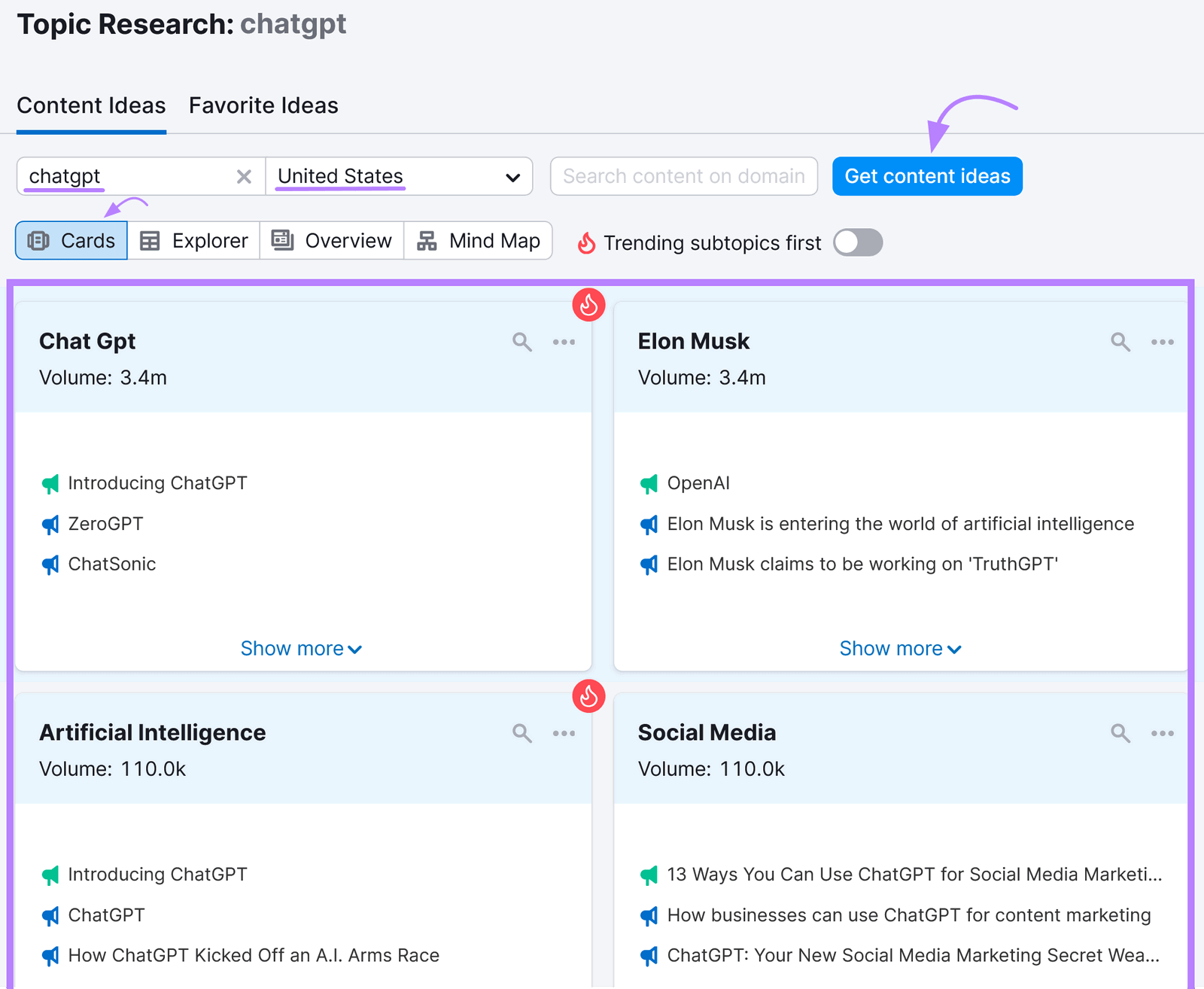
Engage with Followers and Other Relevant Accounts
Engage with your audience by liking and commenting on their posts to boost your visibility on LinkedIn.
When you comment, add your insights, draw from personal experience, and expand on ideas to start a conversation and showcase yourself as an authority.
You can also ask questions and engage in discussions related to your industry. Like this:
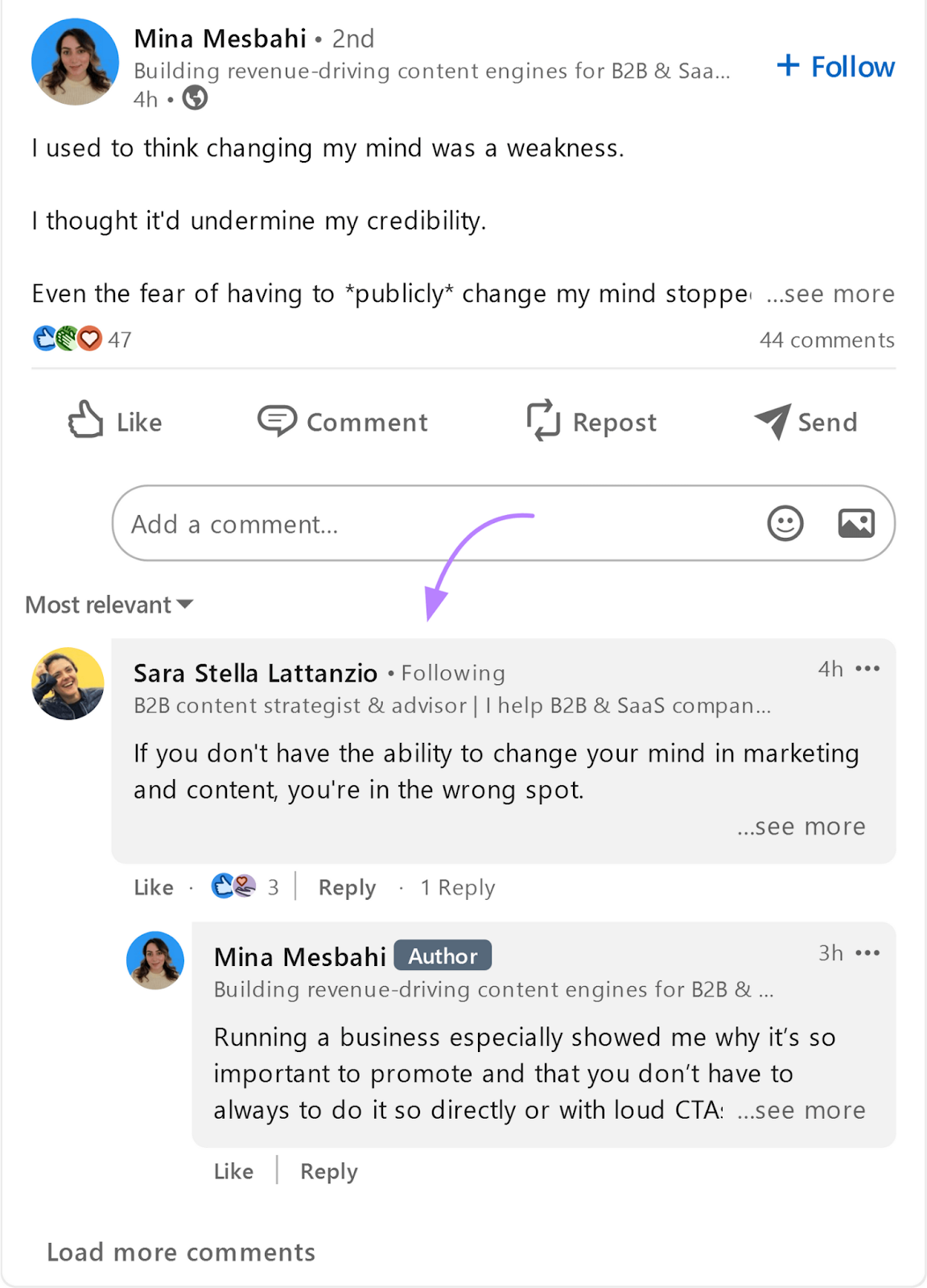
Replying to commenters builds relationships, boosts visibility, and can attract potential leads. This can drive more clients and revenue for your business.
Post Regularly
Posting regularly helps you build a consistent brand presence.
When it comes to timing, the most important thing is to post when your audience is active and most likely to engage with your content.
Note the times when your content generates the highest engagement and optimize your posting schedule to fit this.
It helps if you create a content bank and use LinkedIn's scheduling features to stay on track.
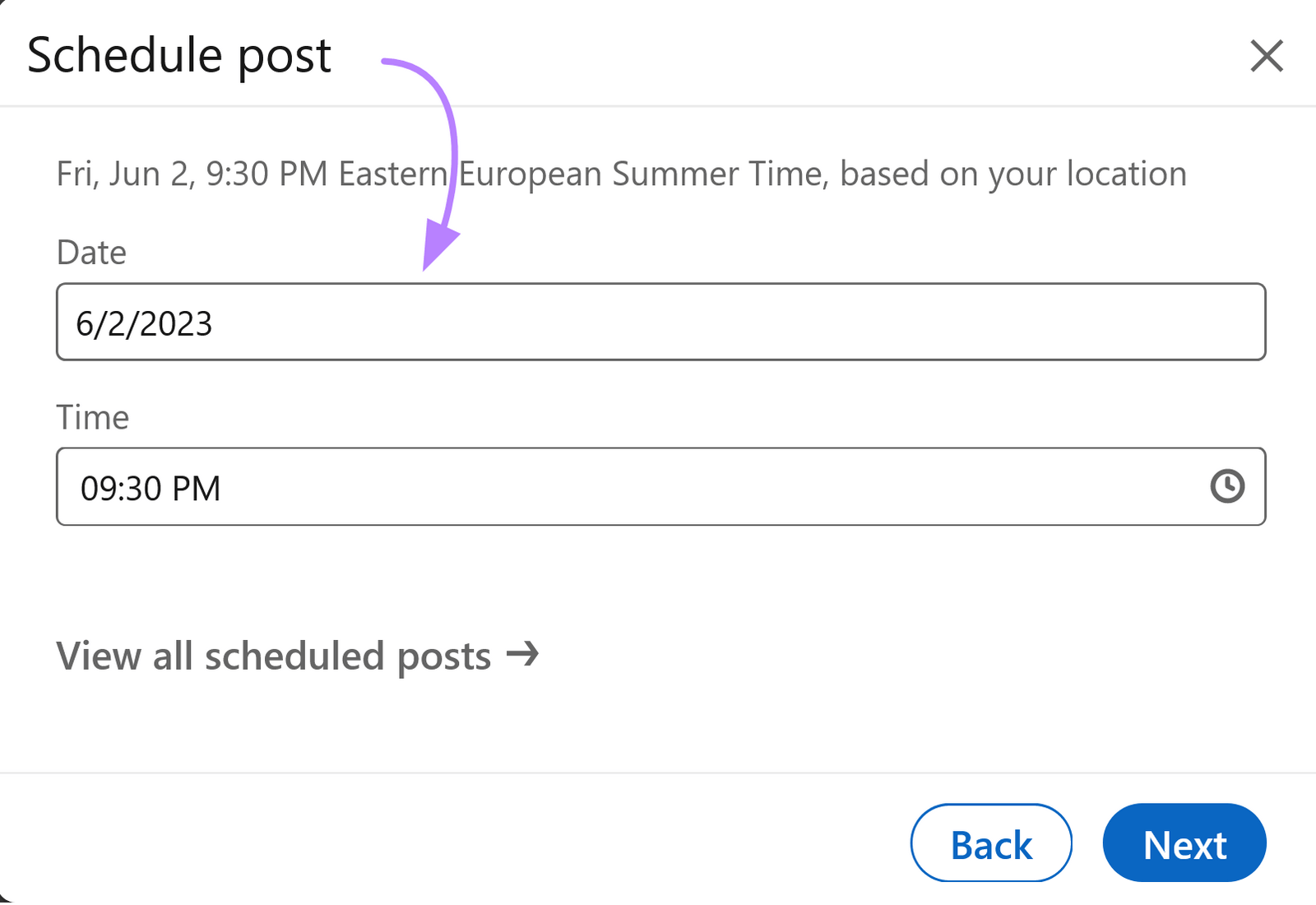
Experiment with Different Content Types
LinkedIn allows you to share text-based posts, images, videos, presentations, articles, and polls.
Visual content tends to perform well.
For example, carousel posts have 1.8 to 2.3 times higher reach than other posts.
Here’s what a carousel post looks like:
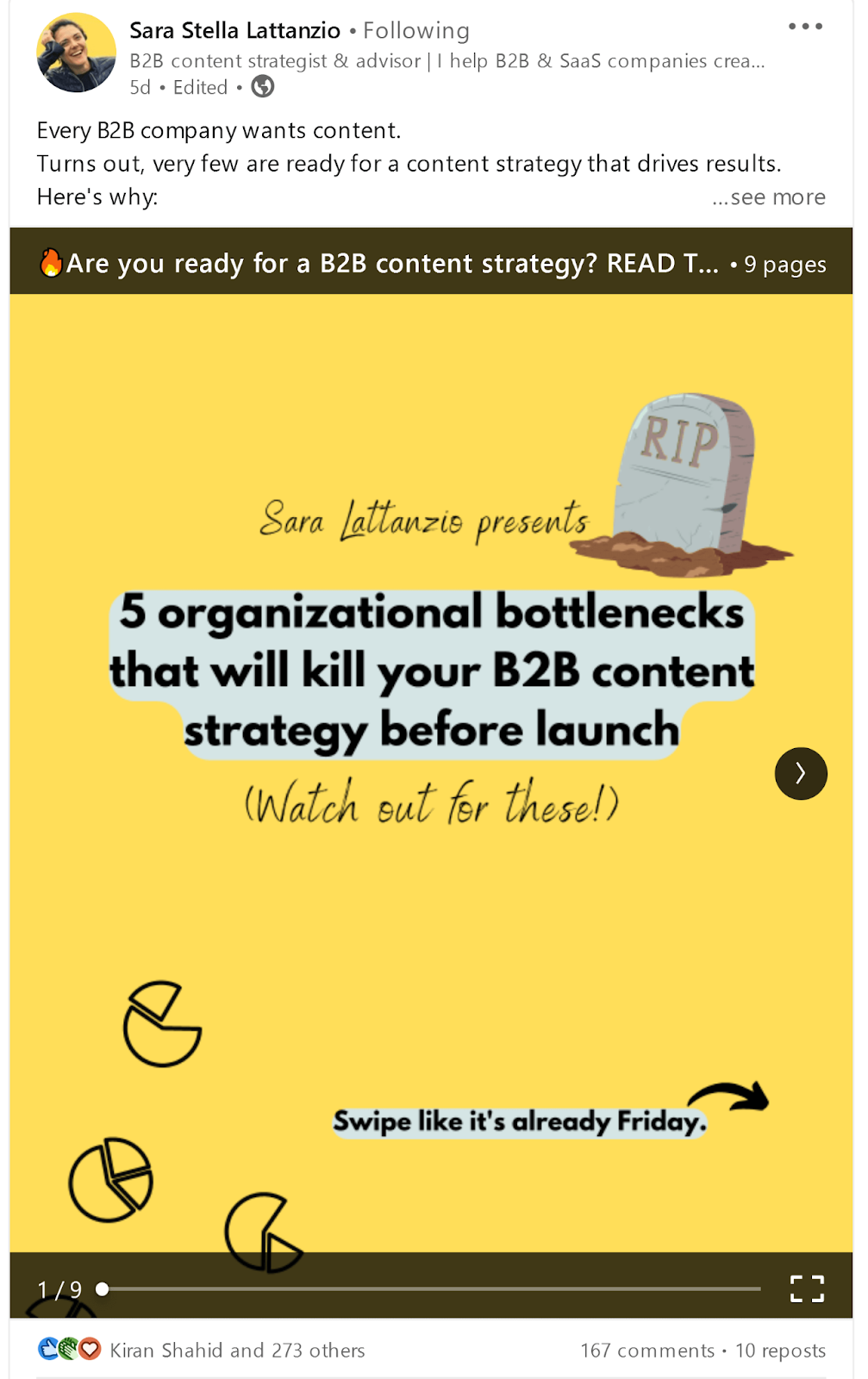
Participate in LinkedIn Groups
Groups can help you reach a larger, targeted audience quickly.
Engage with members in the group by liking their posts, commenting and offering advice where appropriate, participating in discussions, and sharing your content.
But don’t spam groups. Many have rules around spam and self-promotion. And you risk being kicked out if you break them.
Link Back to Your Profile
Backlinks from guest posts, podcasts, and social media to your LinkedIn profile page increase visibility.
If you have a website or blog, you can embed a LinkedIn follow button. Visitors can then follow you on LinkedIn with a single click. Like this:
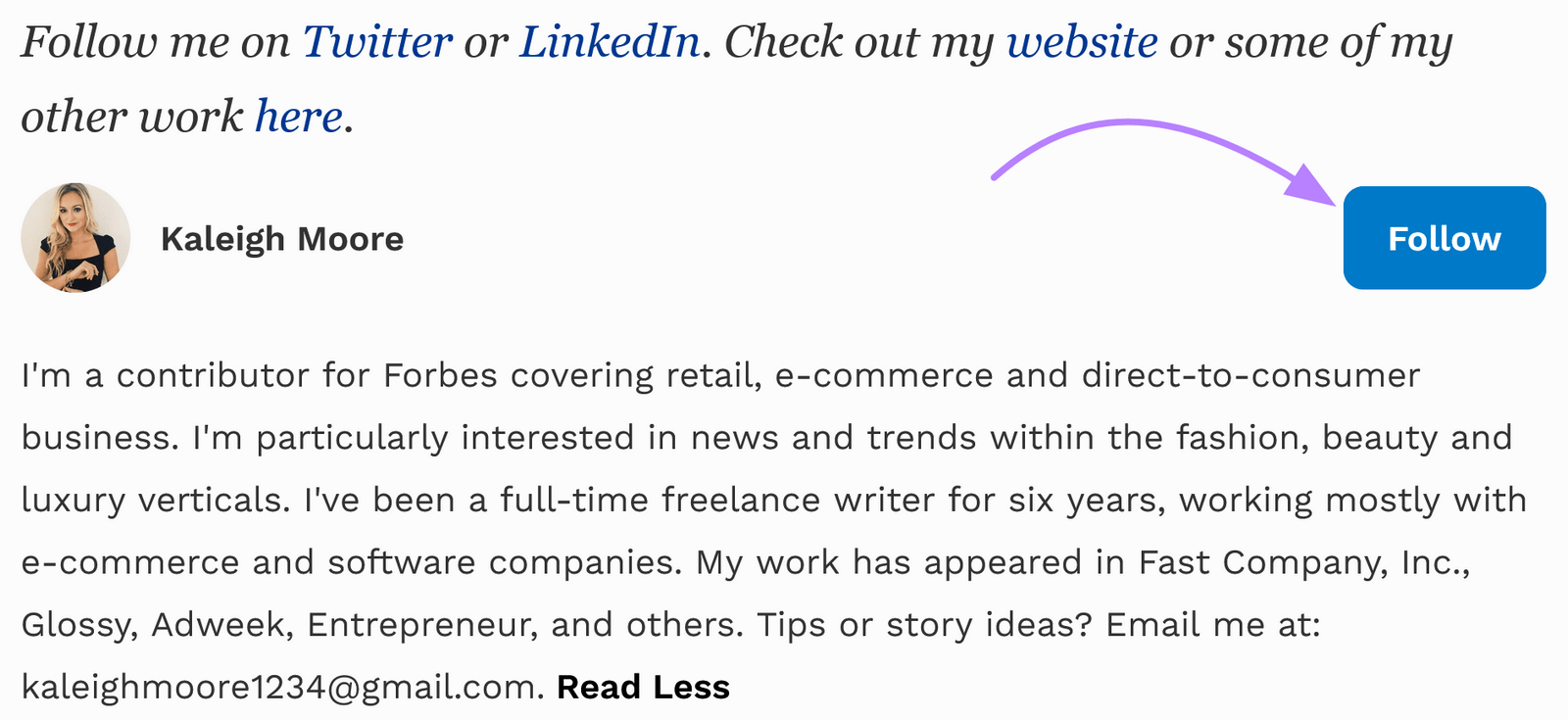
Send Thoughtful Connection Requests
Focus on establishing trust and building relationships when making connection requests to ensure you come across as sincere.
Engage with their content, be genuine in your interactions, and respect their time.
Then, personalize messages with details from their profile, any recent activity, or a shared interest:
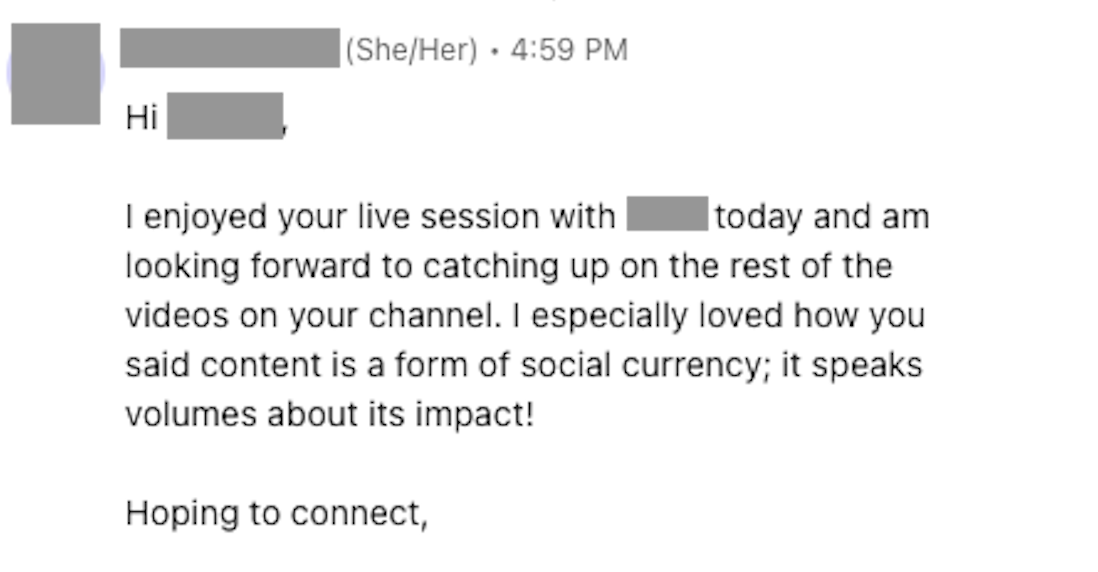
Recipients are much more likely to notice and engage with messages like this.
Maximize Your Professional Footprint with LinkedIn SEO
Using profile/page optimization techniques improves visibility to help you drive results. Especially if you take the next step to engage with others in your niche.
Want to get even more out of LinkedIn?
Find out what makes a Forbes 30 Under 30 profile.
And sign up for a free Semrush account to find the best keywords to use on your LinkedIn profile.
